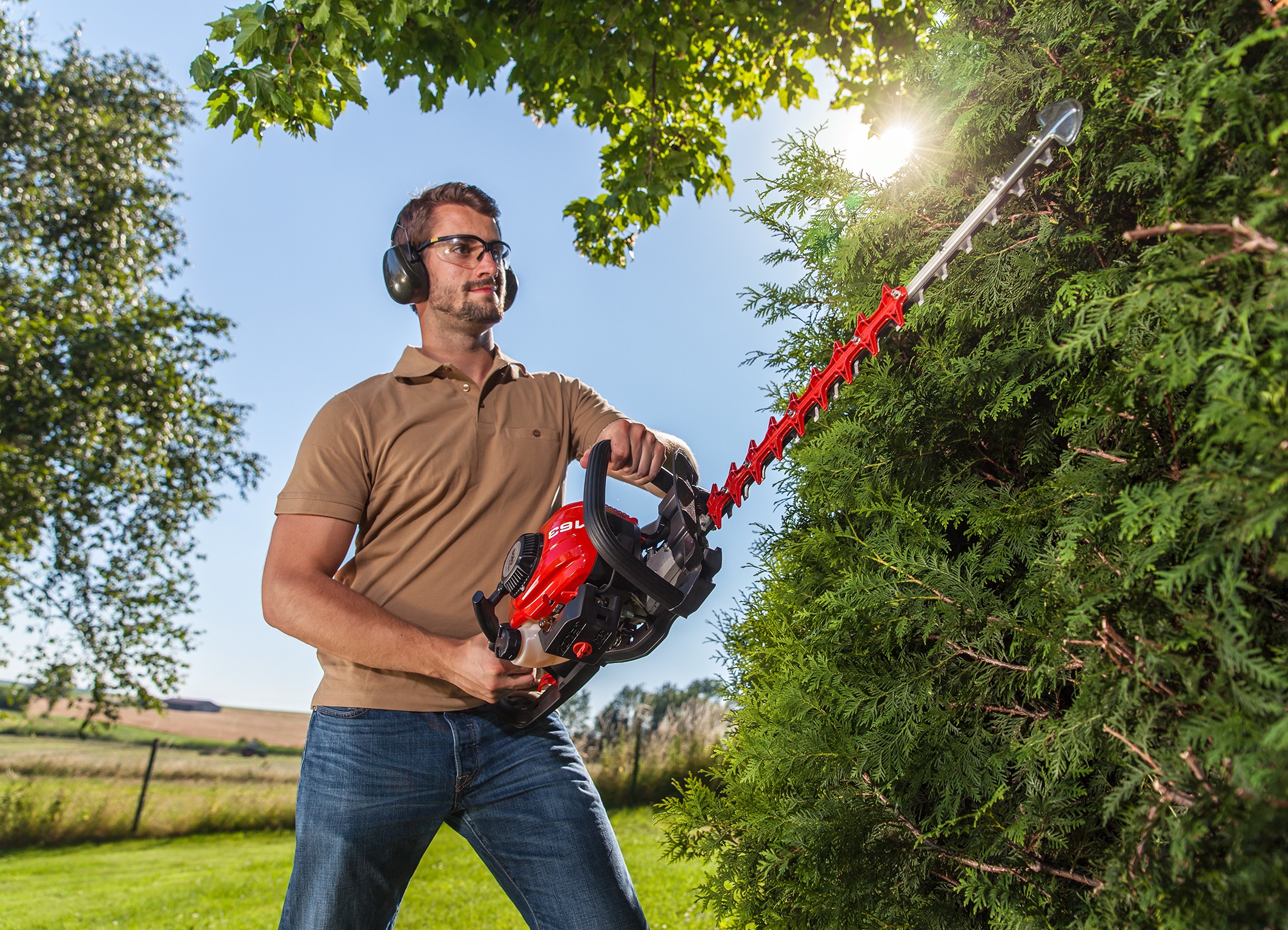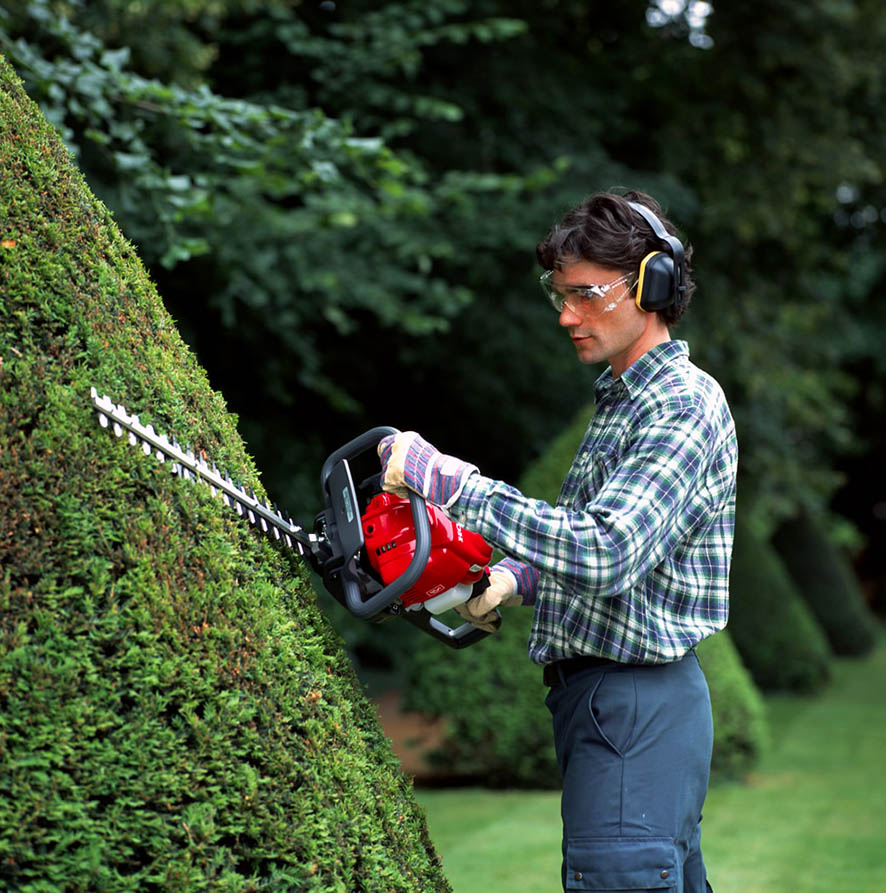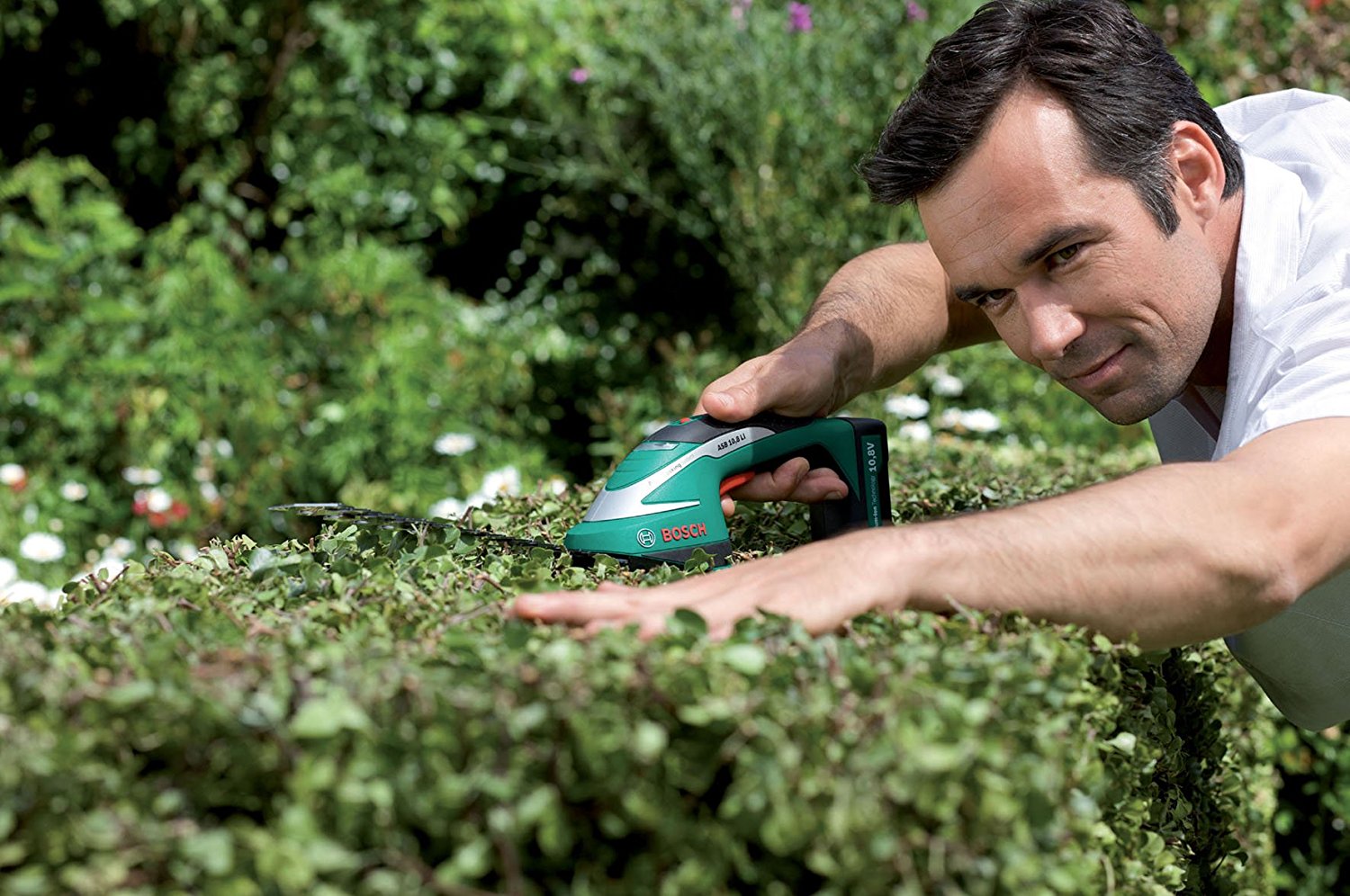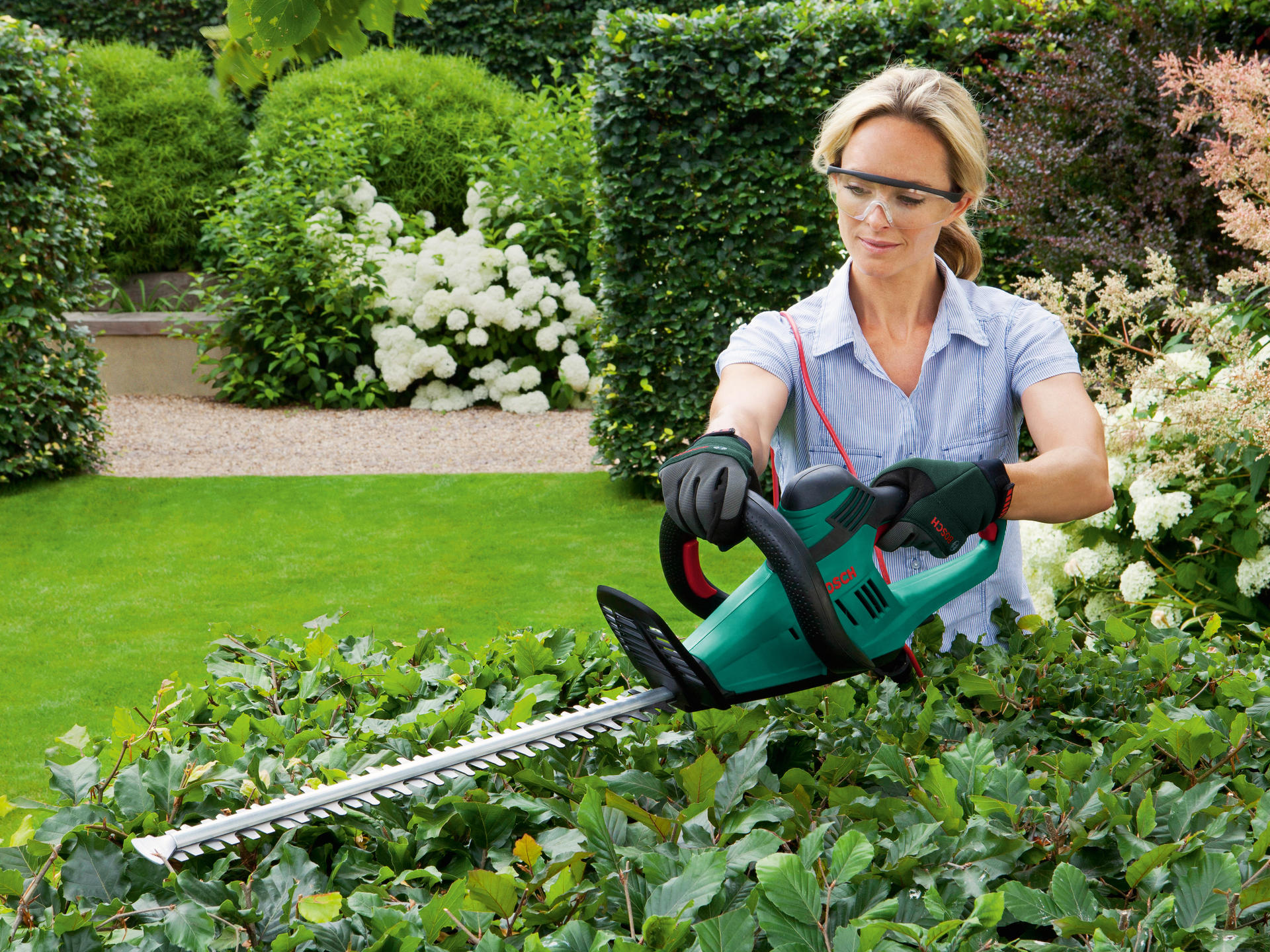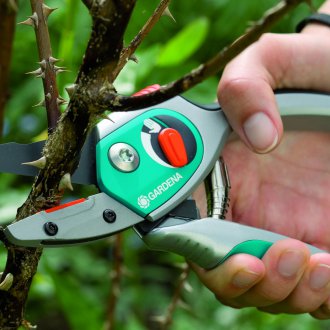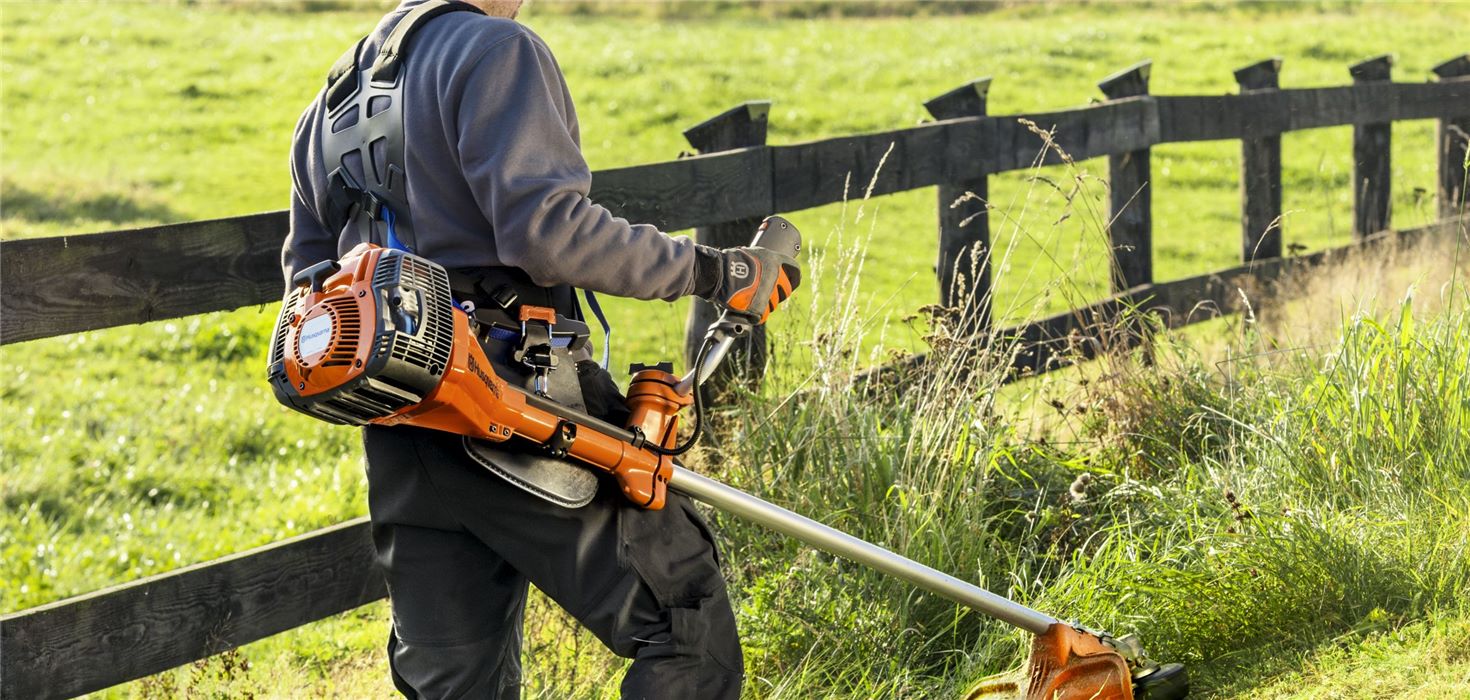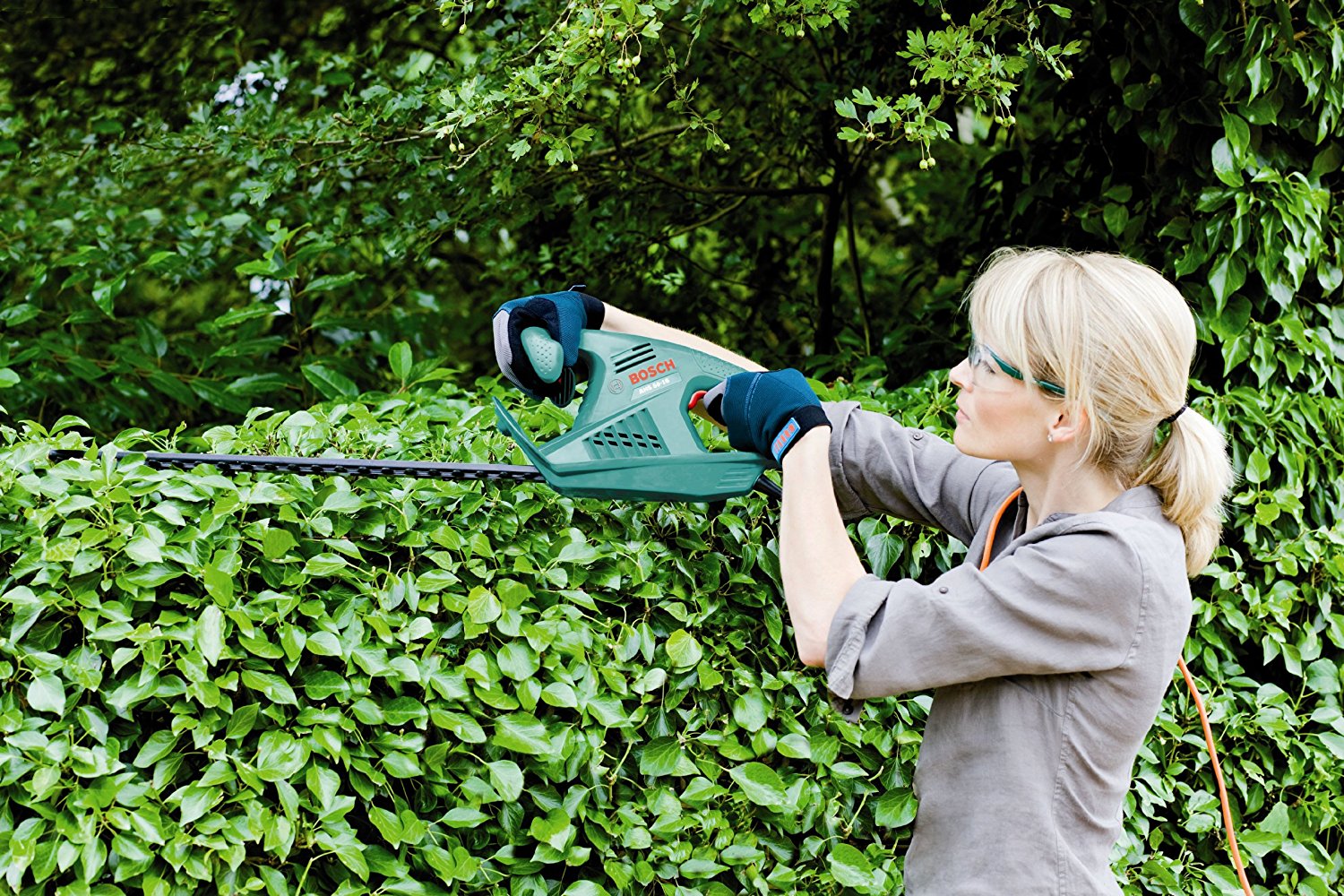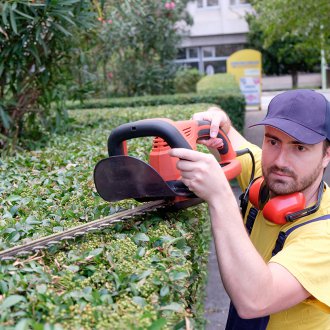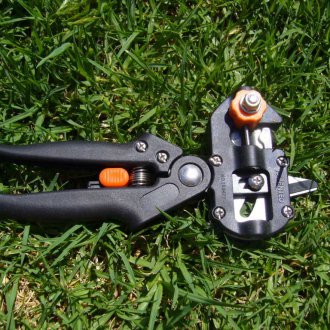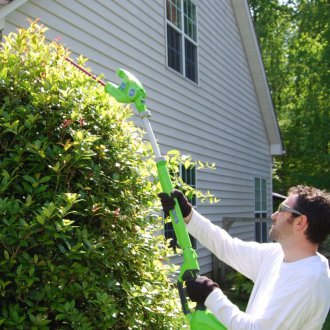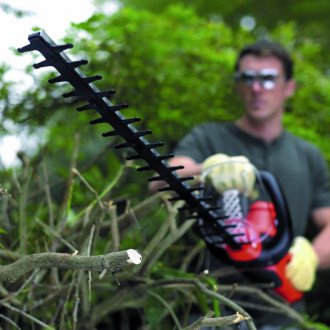How to choose a suitable model of a brush cutter for gardening?
Content
To have a well-groomed and beautiful site is a natural desire of any summer resident or gardener. Giving trees a neat, trimmed look and turning a green hedge into a stylish element of landscape design is not an easy task. Thanks to special tools - brush cutters - you can easily cope with overgrown trees and quickly give shrubs strict geometric or non-standard interesting shapes.
Garden brush cutters can be divided into four types:
- mechanical;
- electric;
- petrol;
- rechargeable.
Each type of tool has advantages and disadvantages. Before choosing a brush cutter, it is necessary to correctly assess the amount of garden work, as well as take into account the cost of the tool and the personal preferences of the gardener.
Mechanical models
This type of tool is the simplest in design and the most affordable. To work with a brush cutter does not require special skills and knowledge. The tool is easy to care for.
Visually, the device resembles garden scissors, but stands out by the presence of longer handles. When choosing it, first of all, pay attention to the following characteristics:
- weight;
- blade size;
- ergonomics.
The most popular models of hand tools equipped with rubberized handles, a saw tooth and a length of about 560 mm.
Brush cutters are suitable for trimming small branches of trees and shrubs or for forming a decorative green hedge of thin twigs.
The disadvantages of the tool can be considered the need to make physical efforts to cut trees, as well as splitting branches, which can lead to plant diseases.
Electric brush cutter
A similar model is equipped with an electric motor, which makes the device much more powerful and more productive, so you can work with an electric tool much longer and more often. The only important nuance is the presence of an electrical outlet at a suitable distance, so when choosing a tool, the following should be considered:
- cord length - this will provide greater mobility of the brush cutter. It is possible to solve the issue with the remoteness of landings in another way - use an extension cord;
- power - provides quick and easy operation, but it consumes more electricity, so it is advisable to choose a compromise version of the equipment;
- idle speed. The higher the indicator, the less time is spent on work and on putting in order shrubs and trees.
Models with single and double sided blades are available on the market. If simple cuts are performed, then you can do with a single-sided blade, and to give shrubs non-standard shapes it is better to use a double-sided blade.
The quality of the haircut is set by the longitudinal distance between the teeth of the blade and the stroke frequency. High frequency guarantees a high-quality haircut (the highest figure is 3500 moves per minute). A significant distance between the teeth and increased power allow you to cut thick branches, but the quality of the haircut is already reduced.
The most popular models with blade lengths from 40 to 50 cm.A similar tool will quite qualitatively remove branches up to 2 cm thick from shrubs / trees up to 2 m high.
For taller and wider stands, a telescopic brush cutter with a blade length of 50-60 cm is used. When choosing a more powerful model, it is necessary to take into account the increased vibration of the tool.
To give the green hedges perfect geometric shapes, choose a vertical brush cutter. Such tools are distinguished by the ability to adjust the angle of inclination of the cutting blade (4 positions are offered). Models are equipped with a special bar that allows you to process high hedges without a stepladder.
Gasoline powered tools
The devices of this line run on liquid fuel and are characterized by high performance. A feature of brush cutters is the ability to perform large volumes of work. When choosing models pay attention to indicators:
- equipping the instrument with an anti-vibration system that provides comfortable work and prevents hands from getting tired quickly, which ultimately increases labor productivity;
- the presence of an exhaust filter system allows breathing relatively clean air during operation;
- purpose of a specific model of the tool. Some manufacturers produce models that are specially equipped to work in topiary gardens, parks and allow you to give shrubs and plants fancy and original forms.
When choosing the best tool models, it is necessary to compare the characteristics of indicators declared by different manufacturers, because at the same power the tools may have different fuel consumption. If you plan to cut tall trees / shrubs, then appropriate models are selected so as not to use additional ladders or stairs.
The disadvantages of such devices can be considered significant weight (5.0-5.5 kg), high cost, strong noise and the need for regular fuel addition.
Battery Models
A similar tool is equipped with both an electric motor and a built-in rechargeable battery. The main advantages are mobility and maneuverability. Models differ in the following characteristics:
- battery capacity and voltage;
- Estimated battery life before recharging.
When choosing a tool, it is important to keep in mind that the more powerful the tool, the longer the working time. However, a cordless brush cutter with a high capacity battery has significant weight.
On average, 1.3 Ah batteries provide up to 30 minutes of continuous use. When buying a tool, they also pay attention to the weight of the models, the noise level and the presence of an indicator showing the degree of battery charge.
Tool Recommendations
Based on brief characteristics, the question arises, which brush cutter to choose? It is advisable to be guided in the selection process by several criteria.
- How often it is planned to use the technique, and what is the duration of a single use of the brush cutter. In this case, the complexity of the work, the requirements for the accuracy of pruning of plants, trees or shrubs are necessarily taken into account.
- It should clearly determine the level of mobility of the tool, its size and ability to carry. It is important to consider how far the plantings are located from the electrical outlet.
- When choosing a tool, it is taken into account that high power is not always necessary to perform continuous and lengthy work. Although, if possible, it is desirable to have a high-powered tool for periodic use. For overgrown shrubs with thick branches, it is optimal to use a gas-powered brush cutter with a power above 800 watts. Good quality haircuts for small hedges with thin branches will provide models with power up to 500 watts.
- Often, removal of vegetation and weeds between trees, at the bottom of the hedge or along garden paths, is required.In such cases, mounted brush cutters are used.
- Not the least important indicators are the level of noise, the weight of the instruments. These characteristics can be very significant if the family has a small child, and the garden is located near the house. Or in the case of using devices by weak elderly people.
- Noteworthy is the tool body material. Durable plastic does not rust over time, easily withstands mechanical stress and is light in weight.
The following manufacturers of the tool make popularity ratings in descending order: Stihl, Husqvama, Bosch, Makita, Gardena.
Of course, choosing a garden tool, do not chase brands or capacities. The forthcoming volumes of work and financial opportunities should be adequately assessed. For compact personal plots with insignificant plantings, a mechanical brush cutter is quite enough.
If trimming of trees and shrubs / hedges is carried out regularly, then the best choice is a gas brush cutter. It can be used anywhere and anytime, but the need for regular refueling and periodic maintenance of the tool should be taken into account.
Electric brush cutter has a lower cost than gasoline, but is “tied” to the location of the source of electricity.
Battery models are quite expensive, but quite environmentally friendly and allow you to process plantings at a considerable distance from the power source.
Various types of brush cutters make it possible to choose the technique that is most suited for comfortably caring for green spaces in each particular garden plot.
